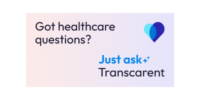KFF October 22, 2024
In 2021, 1 in 5 Medicare beneficiaries or 13.1 million people, known as “dual-eligible individuals,” had both Medicare and Medicaid coverage. Eligibility for Medicare, which is the primary source of coverage for dual-eligible individuals, is based on their age or disability status. For most dual-eligible individuals, there are two pathways to Medicaid eligibility: one is through Medicaid eligibility pathways for seniors and people with disabilities and the other is through the Medicare Savings Programs. These eligibility pathways confer different benefits. The Medicaid eligibility pathways provide coverage of Medicaid benefits that are not otherwise covered by Medicare including long-term services and supports (LTSS), vision, and dental care. The Medicare Savings Programs cover Medicare premiums and often, cost sharing, but not Medicaid...







